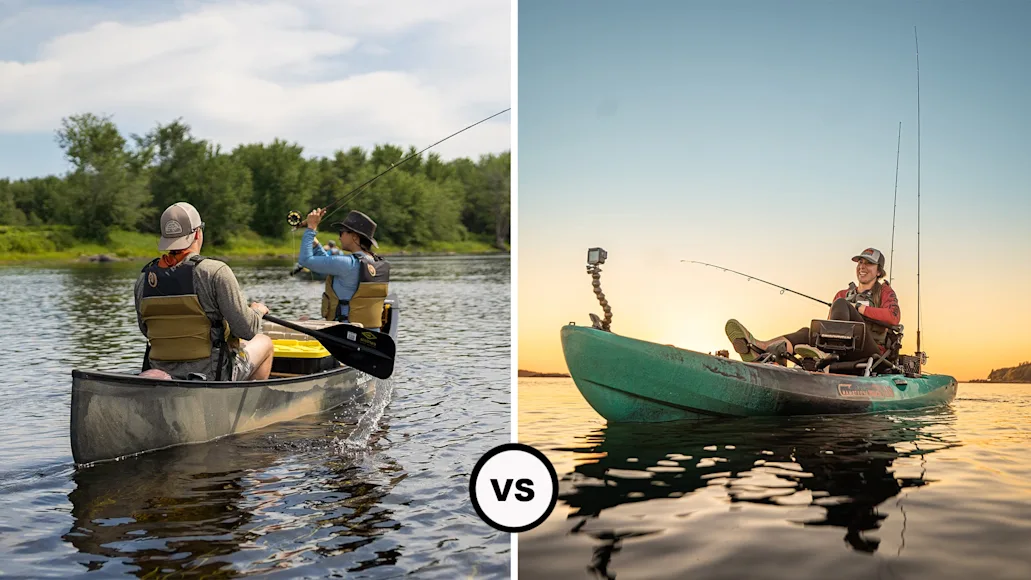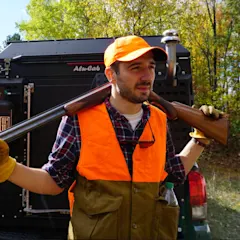_We may earn revenue from the products available on this page and participate in affiliate programs. Learn more ›
_
Whether you’re a waterfowl hunter, an angler, or both, you’ve likely pondered the canoe vs kayak question. Each watercraft has its merits, and they’re both excellent choices for traversing small waters. Canoes and kayaks are also affordable compared to bigger boats. And though they may not be as fast as a motorized boat, they are much more reliable. Here are some big differences between canoes vs. kayaks to help you choose the right one for your next hunting, fishing, or camping trip.
Canoe vs Kayak: Basic Differences
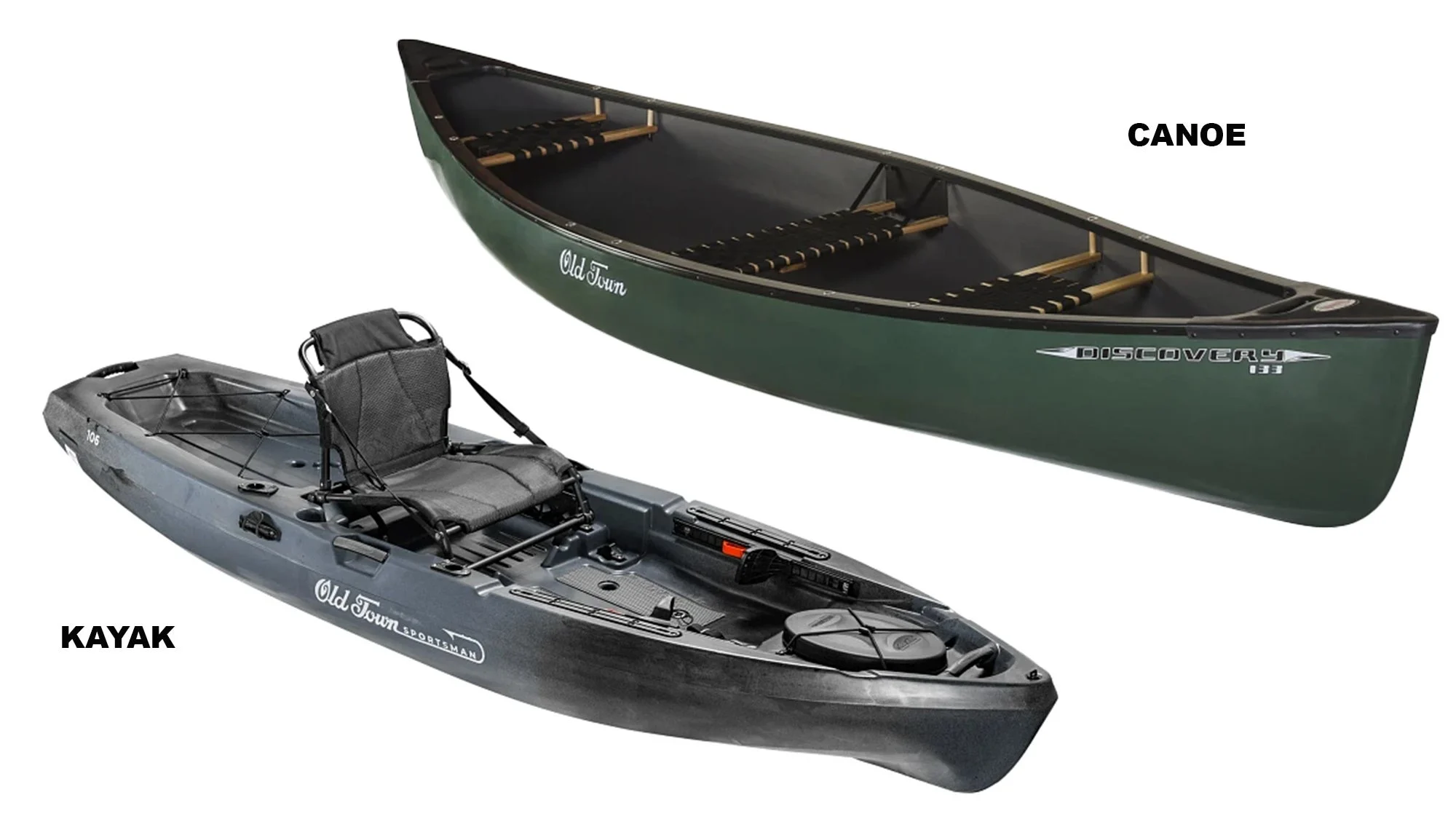
Old Town
It’s likely that the first kayaks came from the Arctic, where Inuit, Yup’ik, and Aleut people used them to hunt and fish on lakes, rivers, and coastal waters. The design is around 4,000 years old, and the first kayaks were made of animal skins. Today, most kayaks have decking to keep the paddler dry and keep the boat from taking on water. Most are also designed for one paddler, but some have two cockpits. Because of their small size, kayaks are very maneuverable.
Some version of the canoe has been built all over the world. Early canoes were made by digging out the insides of logs. They are typically pointed on both ends and do not have decking. Canoes come in many shapes and sizes and can be used for a number of tasks. Though they’re sometimes not as maneuverable as kayaks, they can generally hold more weight and carry more gear.
Paddling Techniques for Canoes and Kayaks
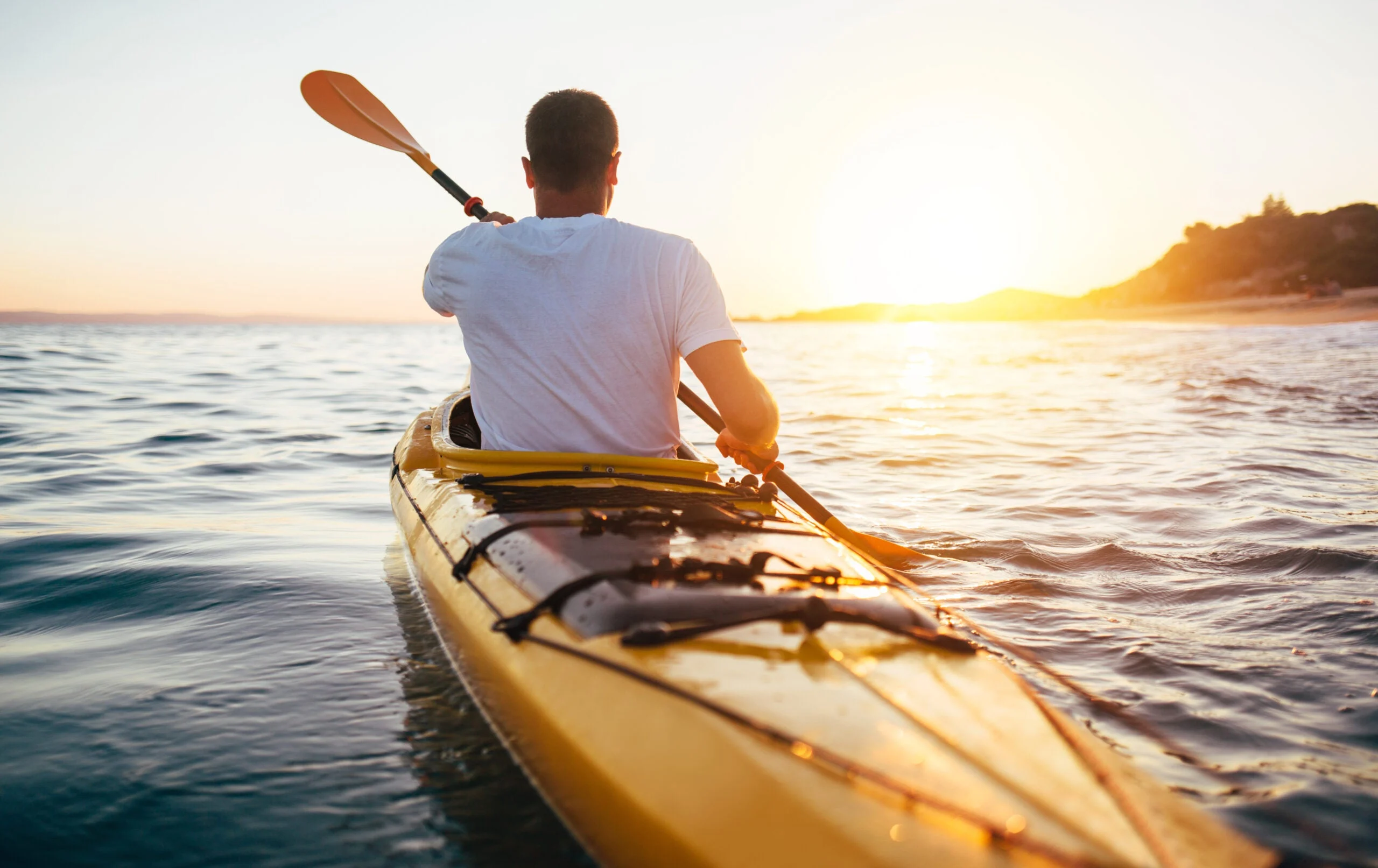
On of the key canoe vs kayak differences is that are typically propelled with different types of paddles. yossarian6 / Adobe Stock
Kayakers typically use a double-bladed paddle to power their boats. These paddles are held with both hands, and the paddler sits low in the boat with the paddle over their lap. Kayak paddling can be complicated, but it is much easier for an inexperienced solo kayaker to power their boat than it is for an inexperienced solo canoeist. With the exception of some sit-on-top fishing kayaks, paddlers need to stay low in their boat while paddling to avoid tipping it over.
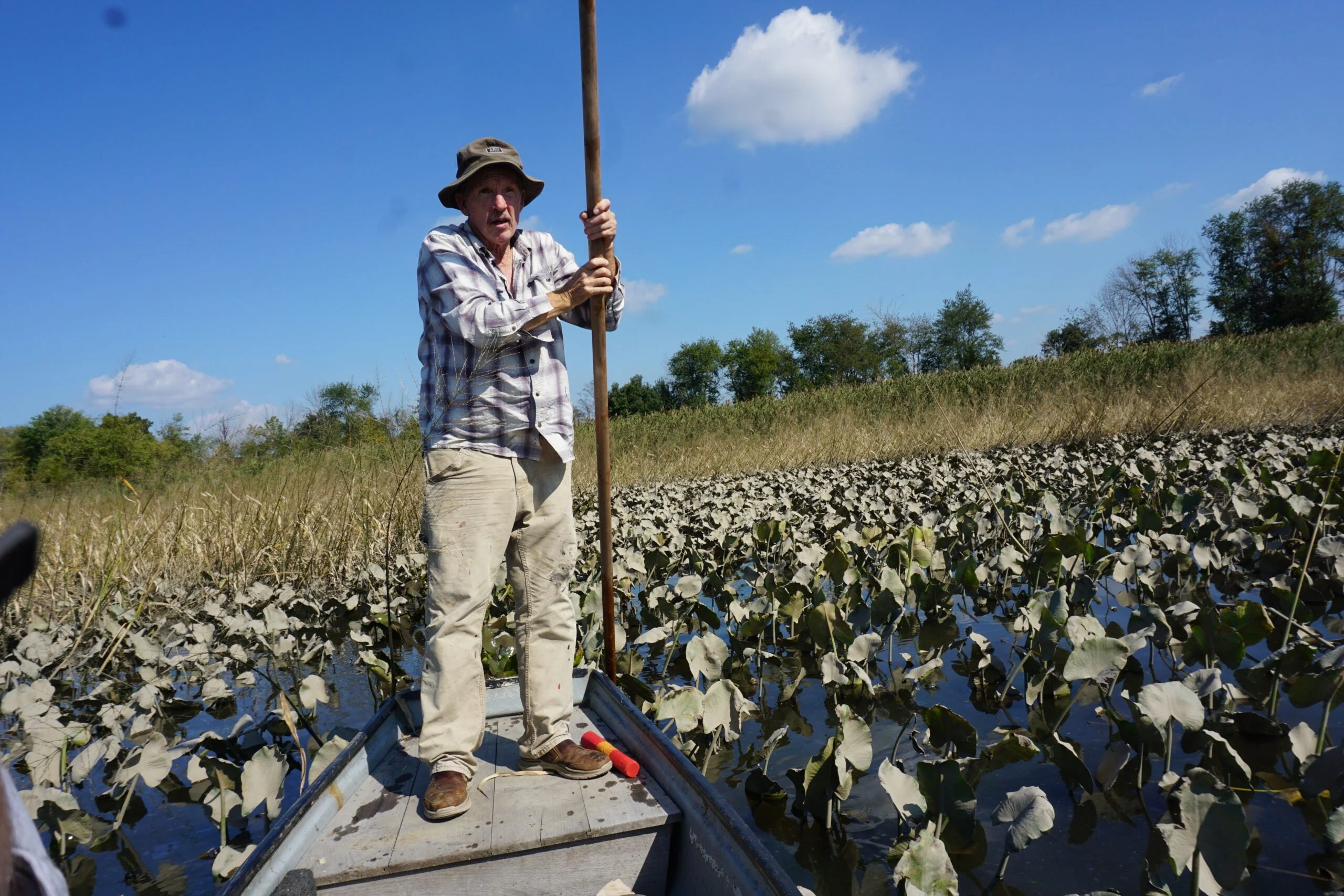
Canoes can be poled in shallow water. Matthew Every
Canoes are powered by one or more paddlers, facing forward, either seated or on their knees. A canoe paddle has one blade of varying design and shape, and the paddler usually switches from one side of the canoe to the other, depending on where they want to go. Skilled canoeists can do a lot with a canoe paddle, and there are many paddling techniques that range from very easy to very difficult. Canoes can also be pushed with a long pole in shallow water.
Canoe Pros and Cons
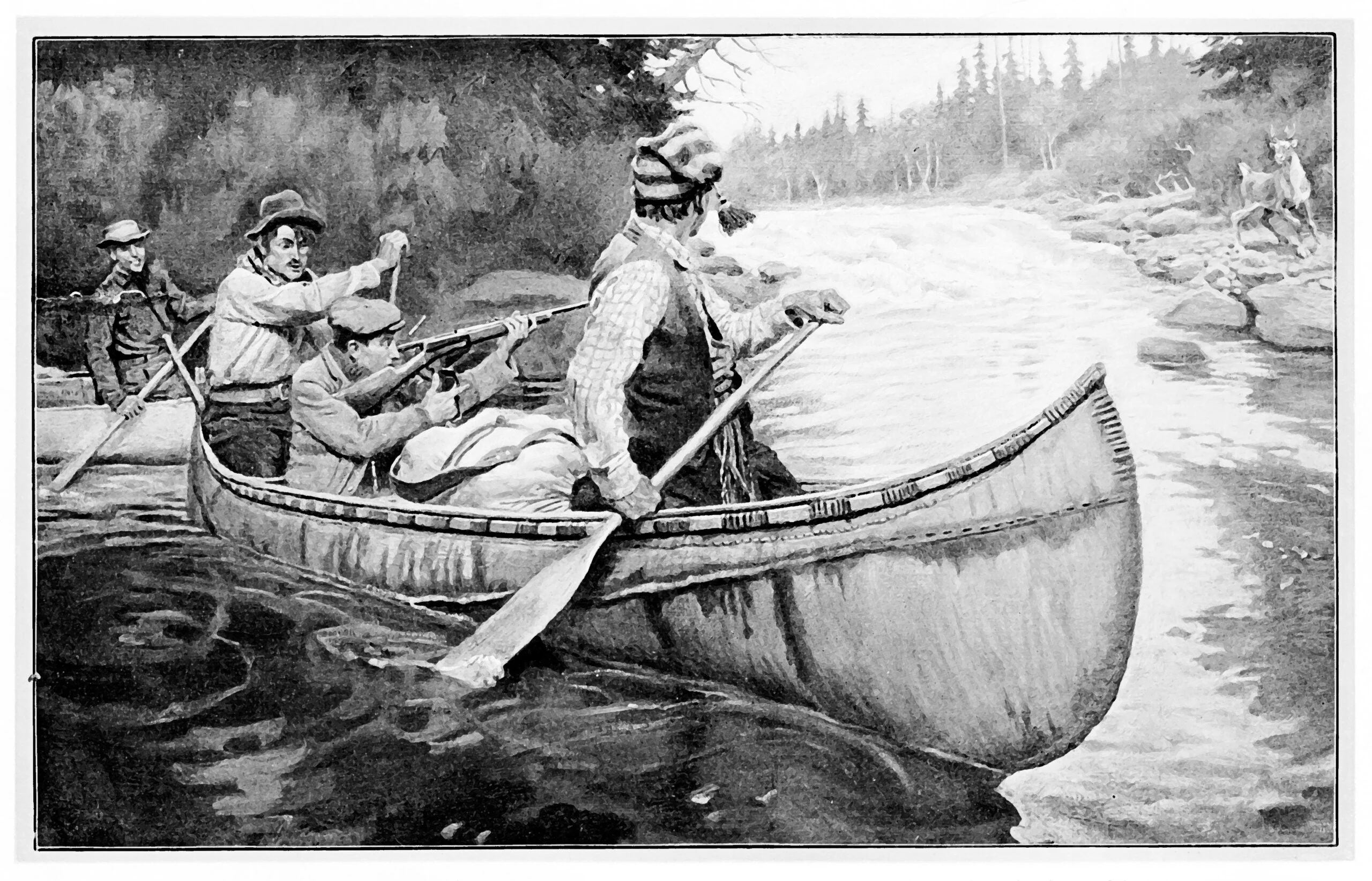
Hunters and anglers have been using canoes for hundreds of years. acrogame / Adobe Stock
In the canoe vs kayak batter, canoes come out on top when it comes to carrying weight, including gear and passengers. On average, canoes can hold just under 1,000 pounds, and if you learn how to properly pack a canoe
, you could live out of one for more than a week. Canoes can also be equipped with electric or gas motors to make them even more versatile. For the duck hunter, canoes are great because they have plenty of room for decoys, guns, and a dog. An angler with a lot of tackle will also appreciate how roomy a canoe is. Canoes are more stable than many kayaks, so you can stand up to cast or pole the boat in shallow water.
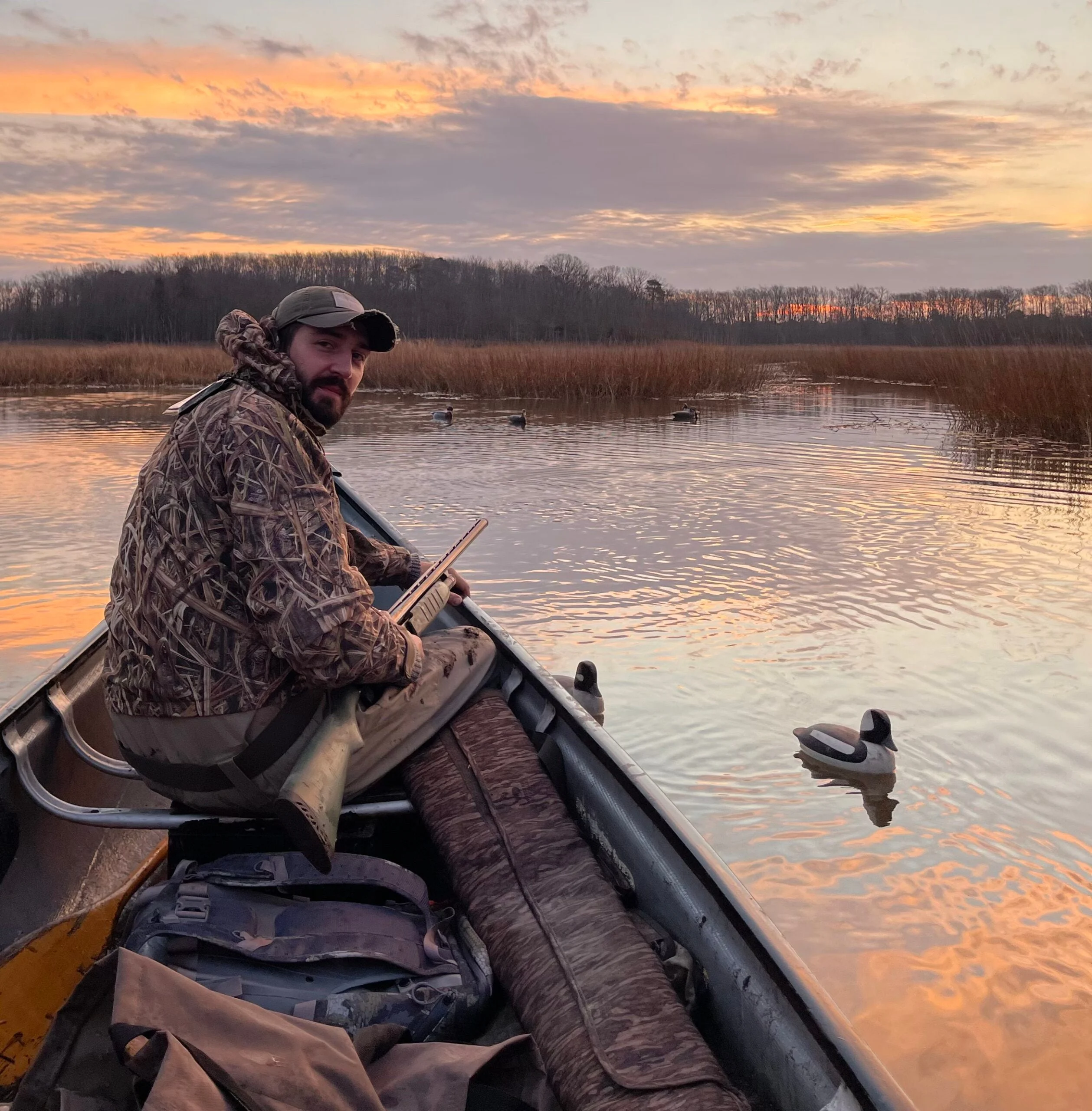
The author hunting ducks. Canoes have plenty of room for decoys, gear, and dogs. Matthew Every
There is a learning curve to paddling a canoe, however, especially if you’re trying to move a bigger boat on your own. Canoes can also be heavy depending on the material they’re made from, and ultralight canoes can be fragile. If you’re in rough water, canoes can be a handful, too. Because canoes are open, they can take on water and sink. Inexperienced paddlers should stick to calm water without a lot of rapids.
Kayak Pros and Cons
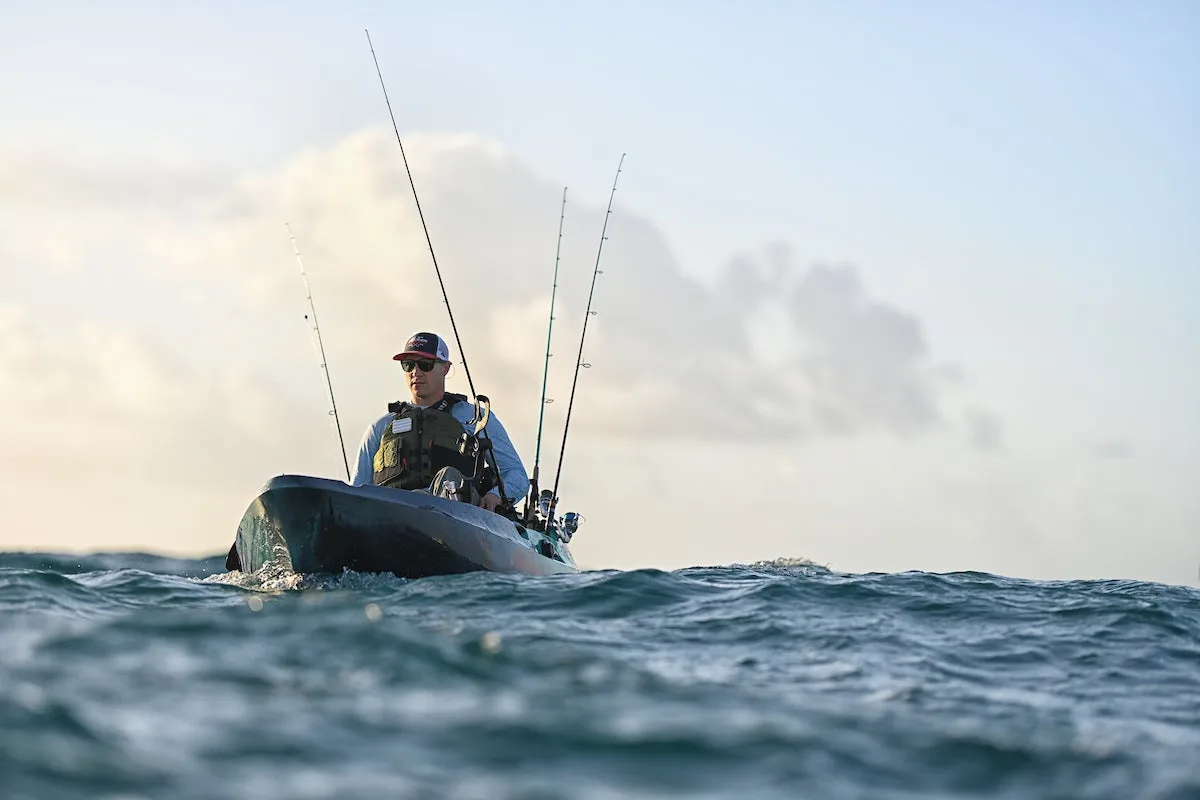
Kayaks are sleek, fast, and can typically handle rough water. Old Town
Where canoes are the pick-up trucks of small watercraft, kayaks are the sports cars. Depending on the design, they can be very fast and easy to paddle. Kayaks are also harder to sink than a canoe because of their decking. The best thing about kayaks, though, is their light weight and portability. A solo paddler can easily lift a small kayak onto the roof of a car, or put it in the back of a truck. For hunters and anglers, there are also sit-on-top kayaks that can be very sturdy. Some sit-on-top fishing kayaks
can be loaded down with everything you’d need for a day on the water. Models from Old Town and Hobie can be paddled with foot pedals and electric motors, making them perfect for hands-free trolling. There is also an industry geared toward kayak anglers, with plenty of kayak accessories
on the market.
While there are tandem kayaks for two or more paddlers, the kayak is really meant for solo paddlers. This can make it hard to get out with friends unless they have their own kayaks. Some kayaks can be tippy, and it can be difficult for some people to get out of one if it goes upside down. If you’re a bigger person, you might dislike kayaks because of their cramped cockpits—however, plenty of good sit-on-top kayaks are out there. Larger sit-on-top fishing kayaks can be heavy, and some need their own trailer and wheels to pull the boat to the launch. Kayaks are less capable of holding things like decoys and dogs, but many duck hunters in kayaks manage with a smaller spread.
Canoe vs Kayak: Which One is Right for You?
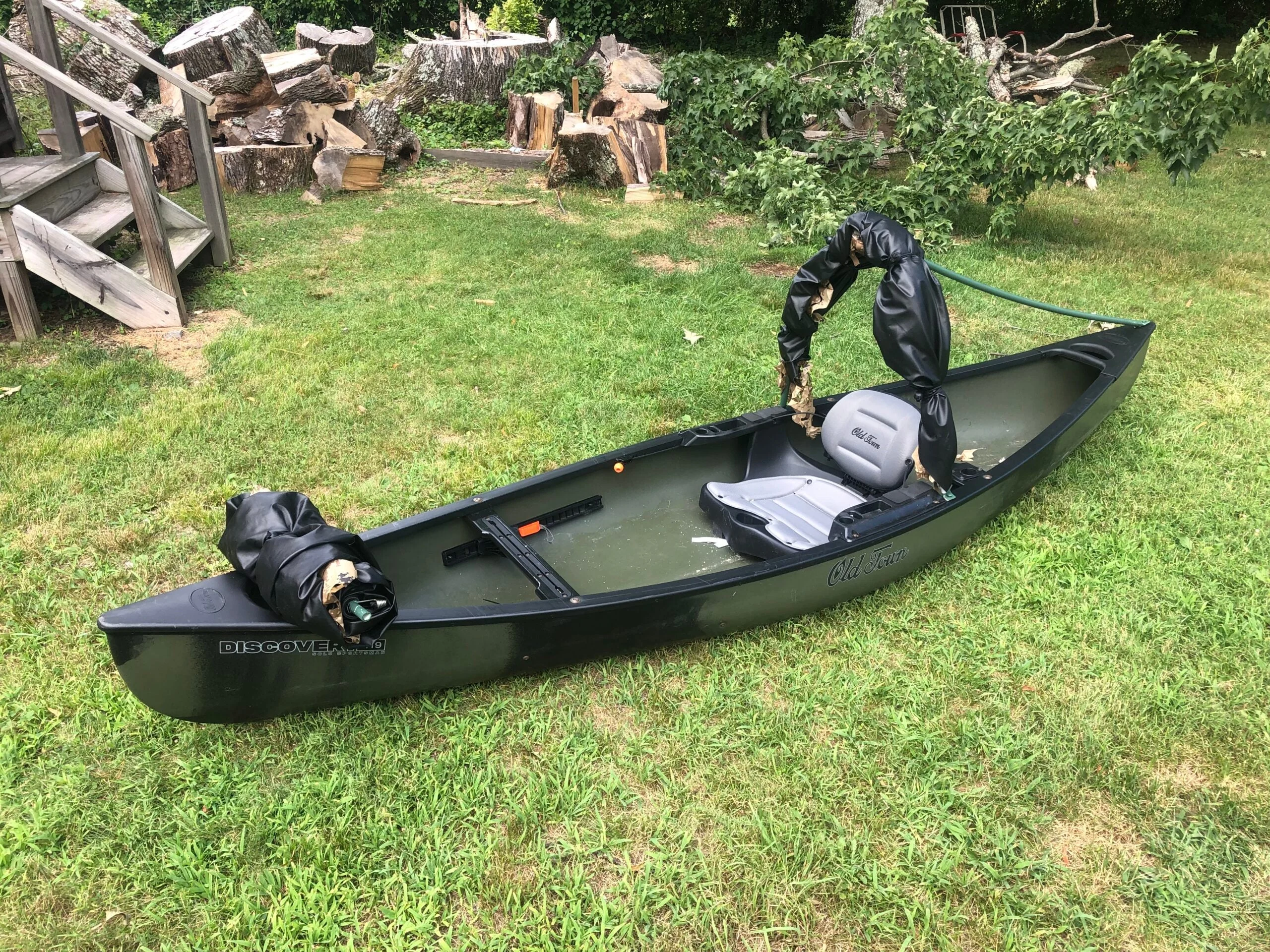
The author’s Old Town 119 Solo Sportsman outfitted with a home-made packable duck blind. This boat is really the best of both worlds. Matthew Every
The canoe vs kayak decision really comes down to what you need to bring on the water. If you’re bringing a friend, a dog, or a bunch of gear, the canoe is the better choice. If you’re striking out on your own for a quick paddle, go with a kayak. Speaking from experience, I think it’s best for an outdoors person to have one of each. There are days when I’ll need the extra capacity of a canoe. But sometimes, having a small, lightweight craft like a kayak is better. If you could buy only one boat and you’re going solo, I would go with a hybrid of the two.
Old Town makes a one-person canoe called the 119 Solo Sportsman
that’s outfitted with a kayak-style seat. You can also find similar one-man canoes from other makers. The 119 is one of the best fishing canoes
out there. It weighs about 60 pounds, and it’s easy to transport. It can be paddled like a kayak and is sturdy enough to stand in. It can also hold enough fishing or hunting gear for just about anything.
Canoe vs Kayak: Frequently Asked Questions
**Is a canoe more difficult than a kayak?**
It can be, especially for solo paddlers in larger canoes. With two or more people, though, you can cover more water with less energy in a canoe. Learning how to paddle your own canoe
is one of the more rewarding skills an outdoors person can pick up.
**Which is heavier: canoe or kayak?**
Kayaks are generally lighter than canoes, but there are some really lightweight canoes on the market today. Heavy fishing kayaks can also be way heavier than a canoe. It really depends on the models you’re comparing.
**Is a canoe or kayak better for two people?**
The canoe is the way to go for two people. There are some great tandem kayaks out there, but with a canoe, you’ll be able to bring more gear. Some people also find canoes more comfortable than kayaks.

